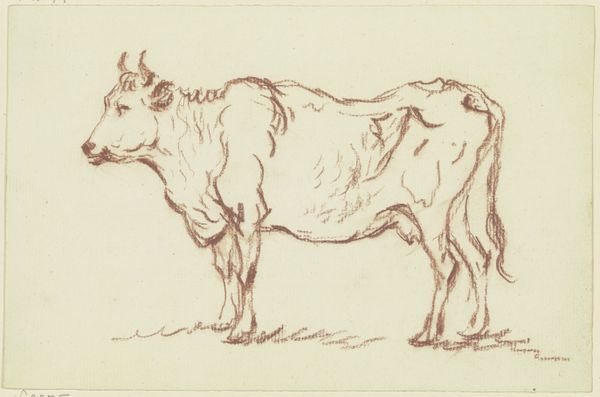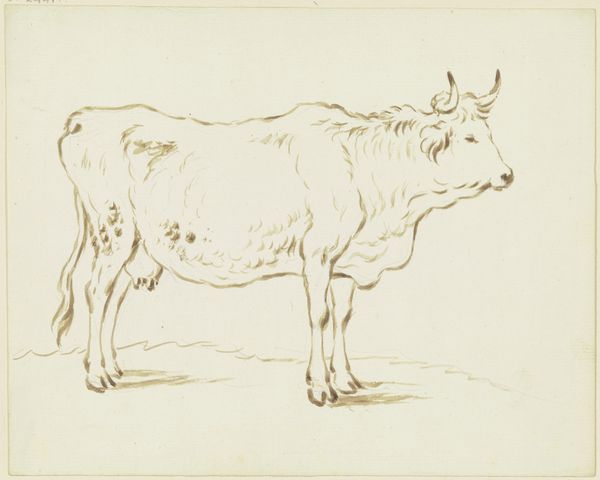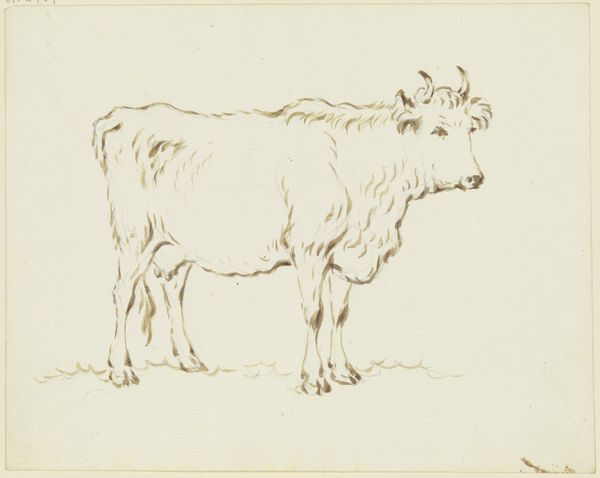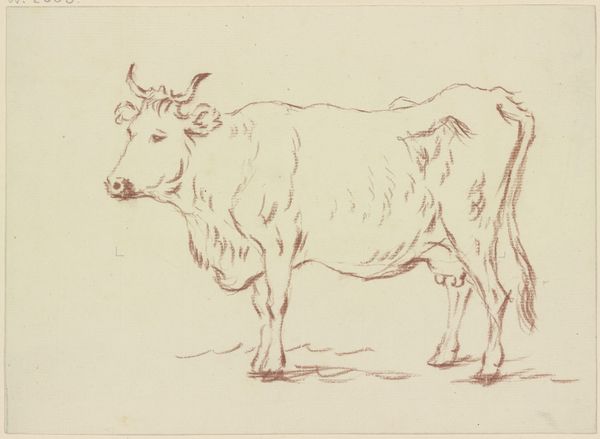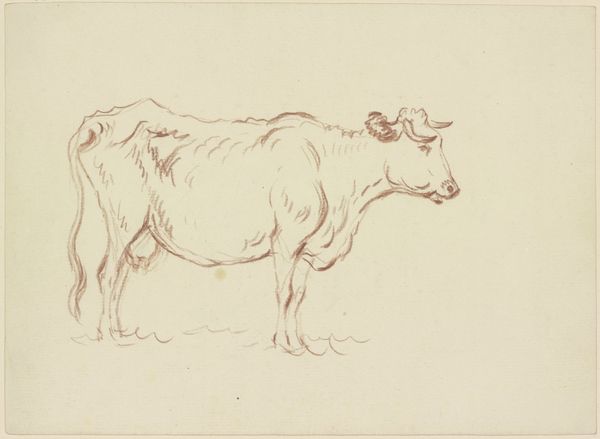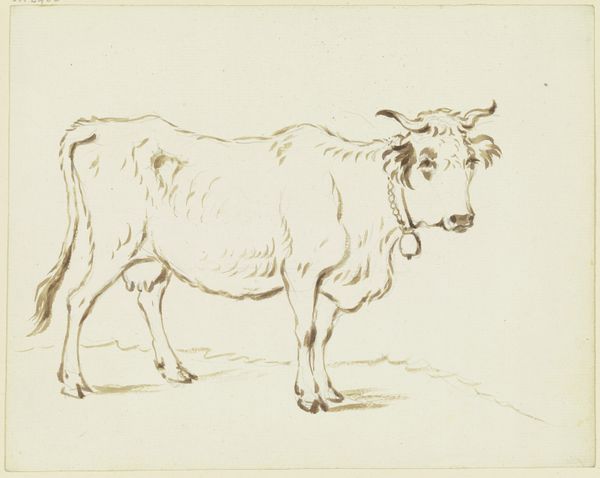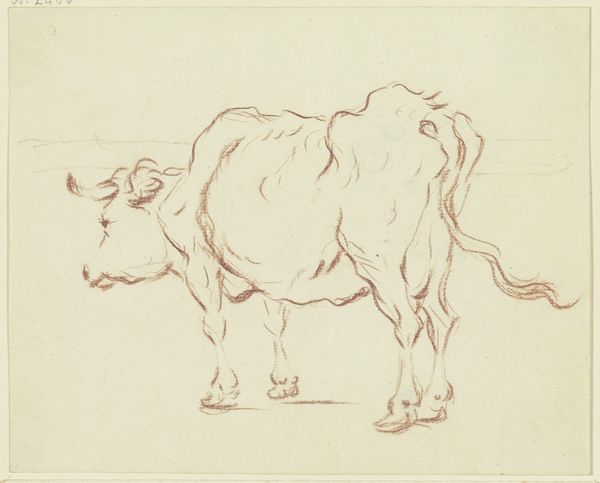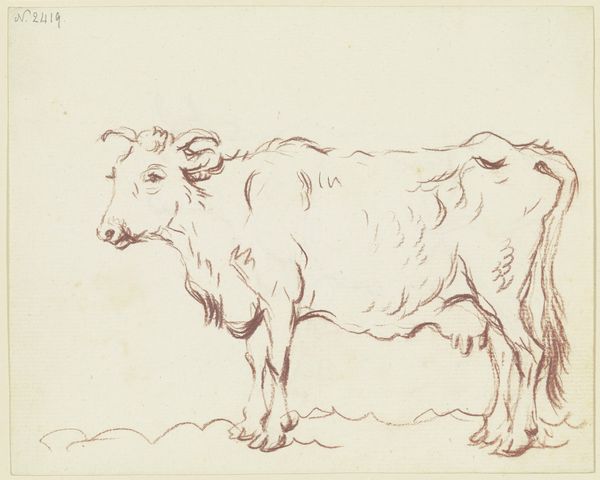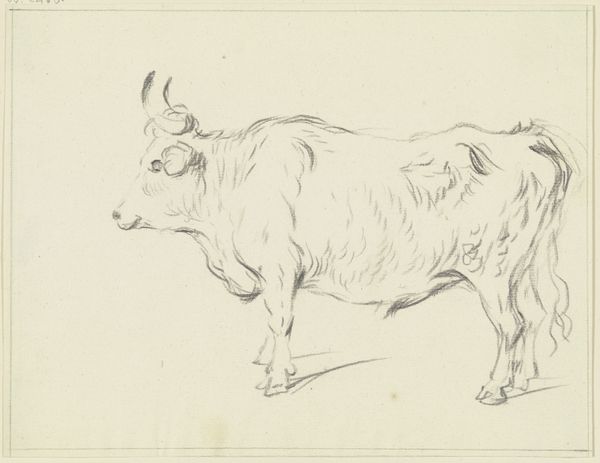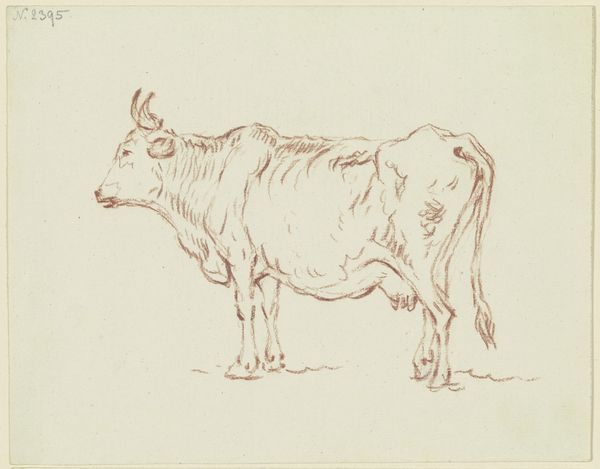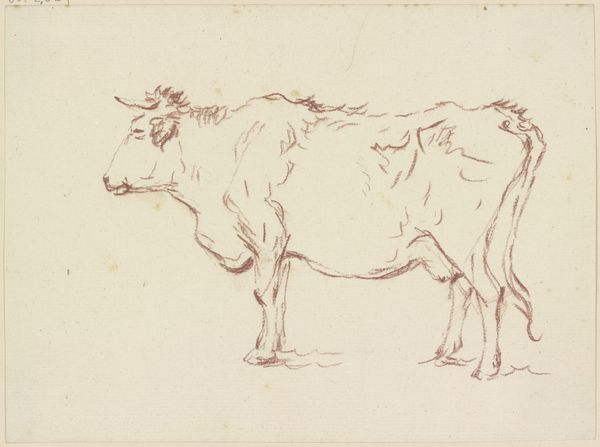
drawing, red-chalk, dry-media
#
drawing
#
ink drawing
#
red-chalk
#
pen sketch
#
landscape
#
figuration
#
dry-media
#
15_18th-century
#
realism
Copyright: Public Domain
Editor: This is "Standing Cow to the Right" by Friedrich Wilhelm Hirt, from the 18th century, using red chalk and ink. There's a simplicity to it, but also a strong sense of realism. It feels like a captured moment. What strikes you about this image? Curator: The cow, rendered in red chalk, immediately brings to mind images of pastoral life, the heart of 18th-century ideals about nature. Notice how the artist captured the very essence of the animal with such simple lines. It embodies fertility, sustenance, and a connection to the earth. Do you see how this single cow transcends just being a farm animal? Editor: I see what you mean. The pose feels intentional, not just a random sketch. There’s a weight and presence despite the medium being so simple. Curator: Precisely. Consider how the "cow" archetype, across cultures, is tied to notions of motherhood, abundance, and even sacrifice. Red chalk, too, evokes a sense of warmth, connecting us to earth and blood. Editor: It makes me think about the artist's intention. Was it simply a study, or was there a deeper symbolic meaning? Curator: It's likely both. Artists in that period often grounded their symbolic language in direct observation. Think of the cultural memory embedded in that one bovine form – a legacy of sustenance and a simpler life, rendered in earthly pigments. Editor: So, it's more than just a drawing of a cow; it's a vessel of cultural meaning. That’s incredible. I never thought about art this way before. Curator: Every line, every color holds layers of meaning, consciously or unconsciously. Exploring art is exploring the rich tapestry of our shared past. Editor: I'll definitely look at art with a new perspective from now on! Thanks.
Comments
No comments
Be the first to comment and join the conversation on the ultimate creative platform.
